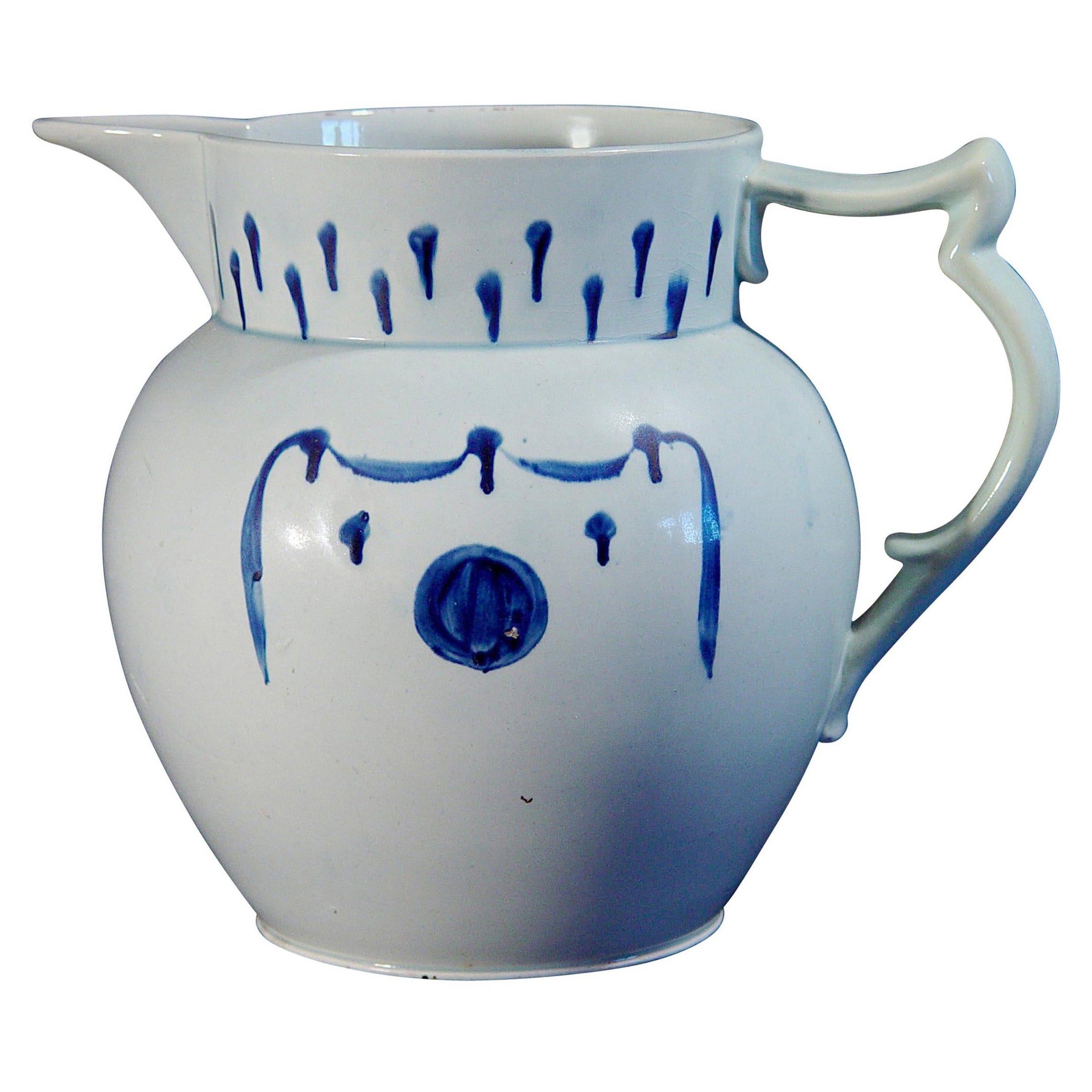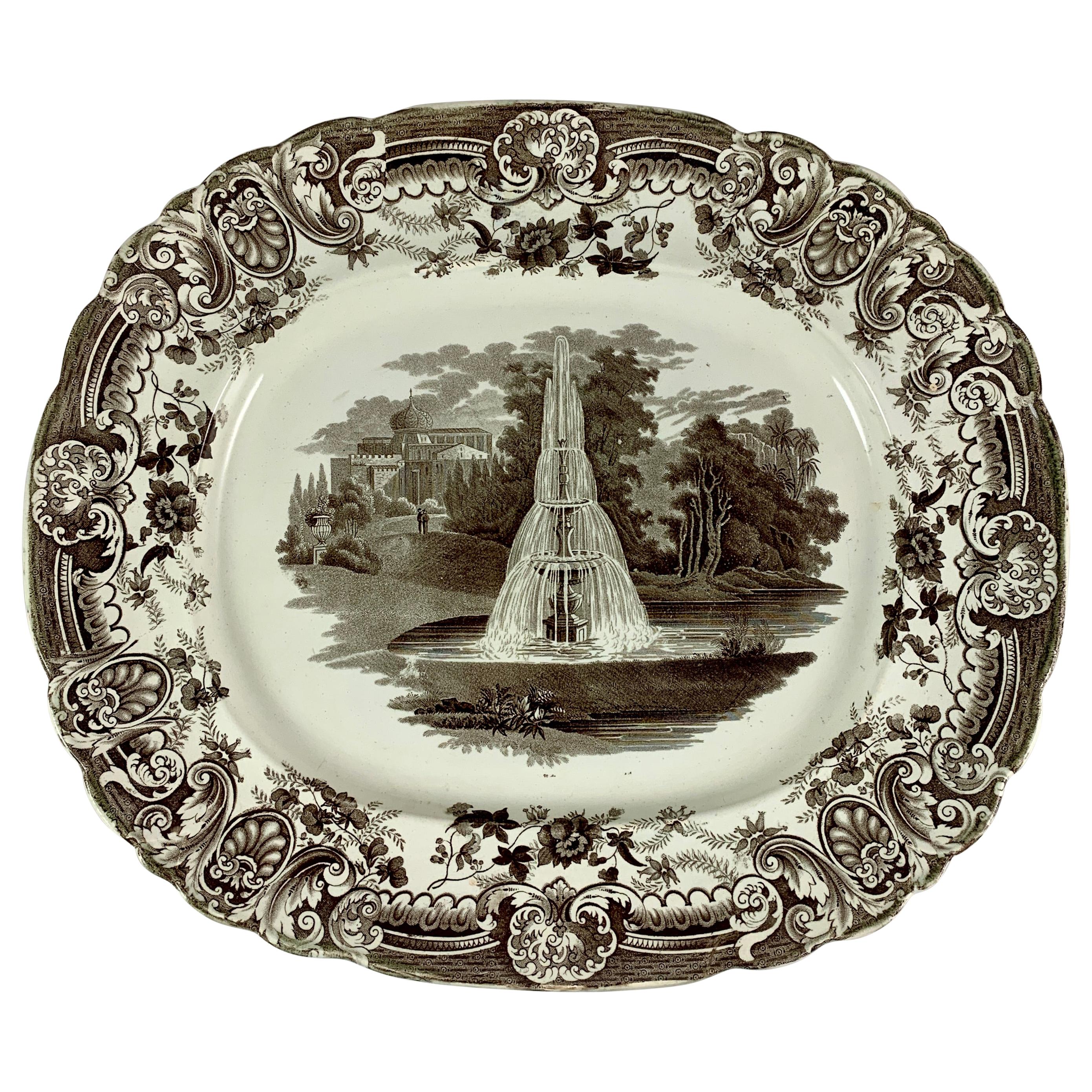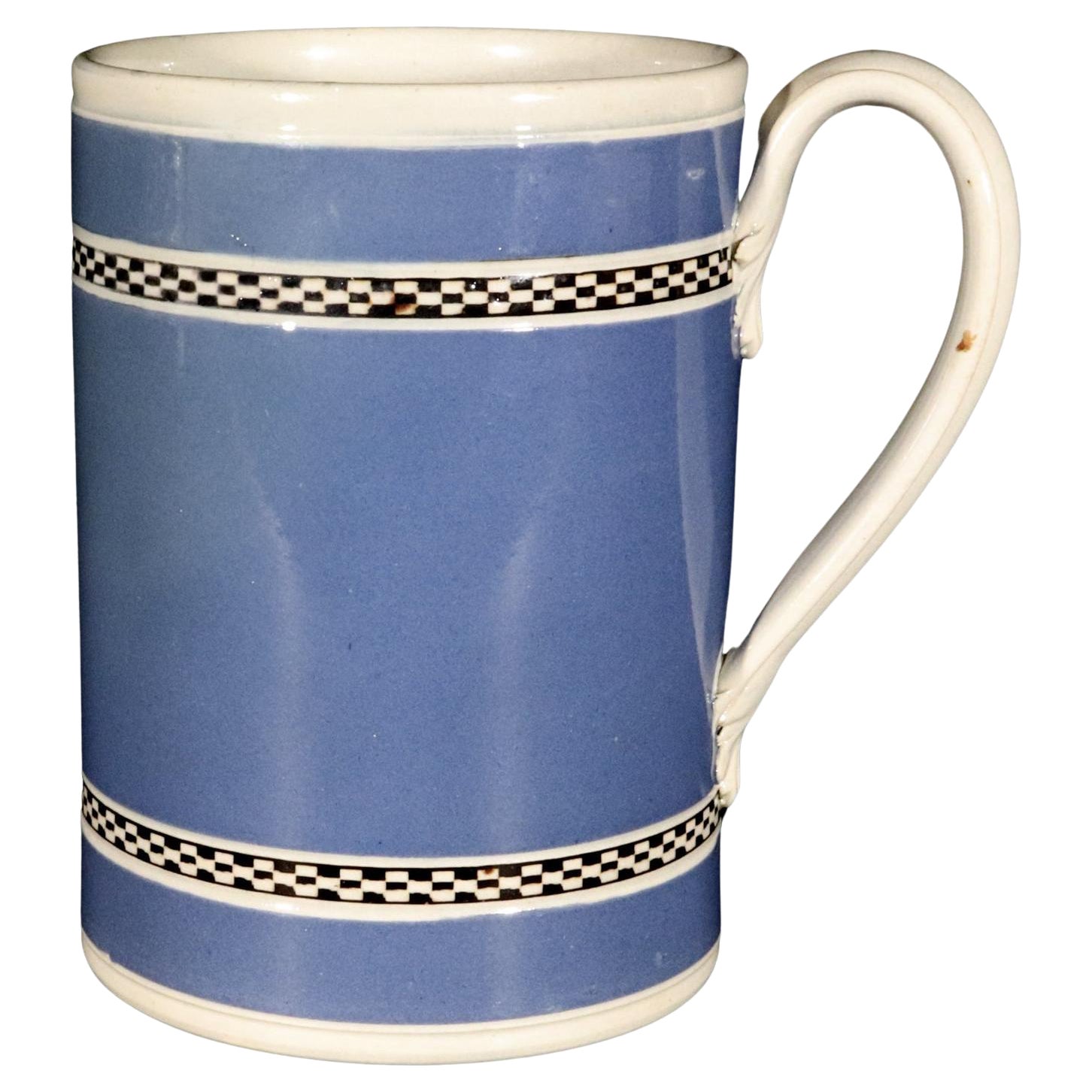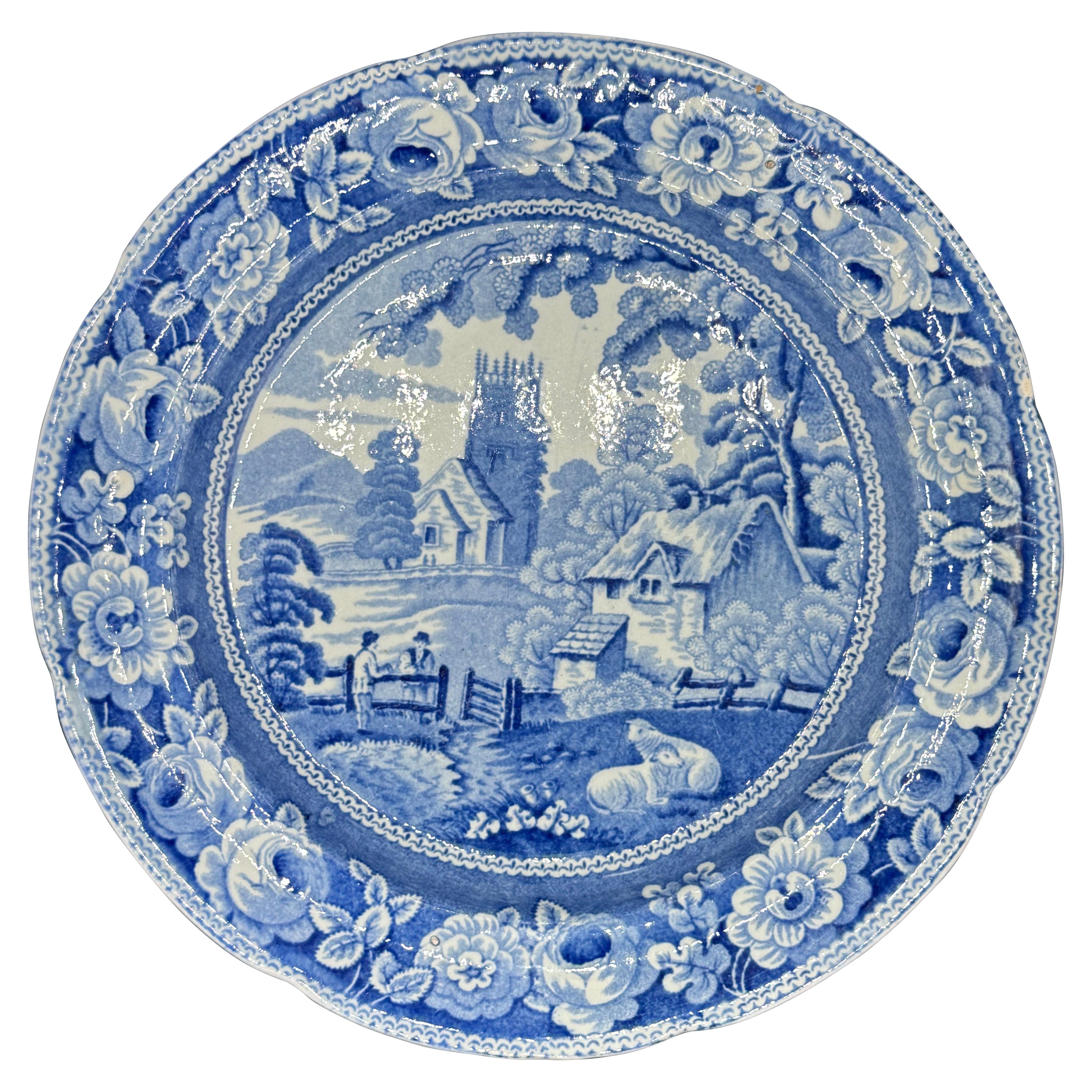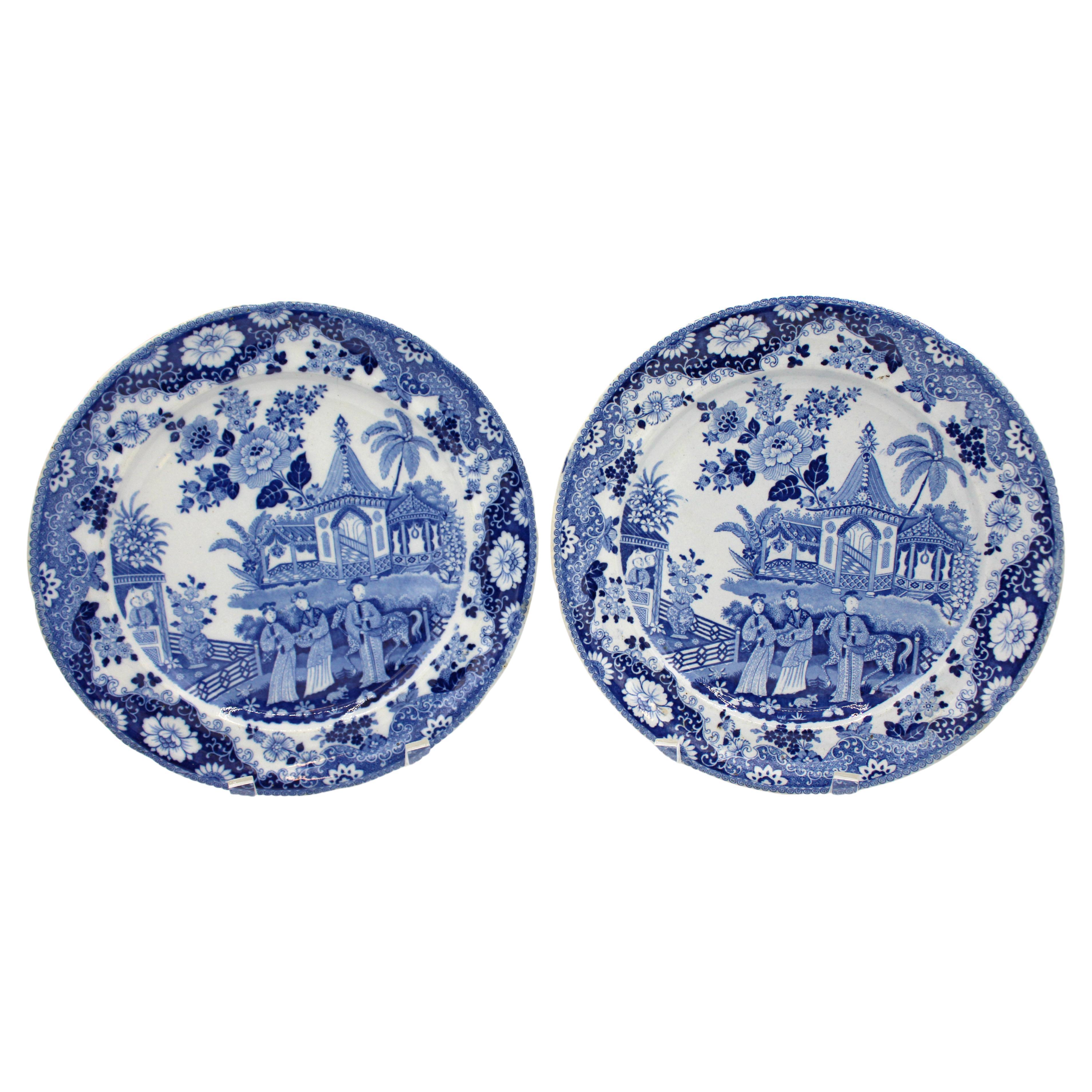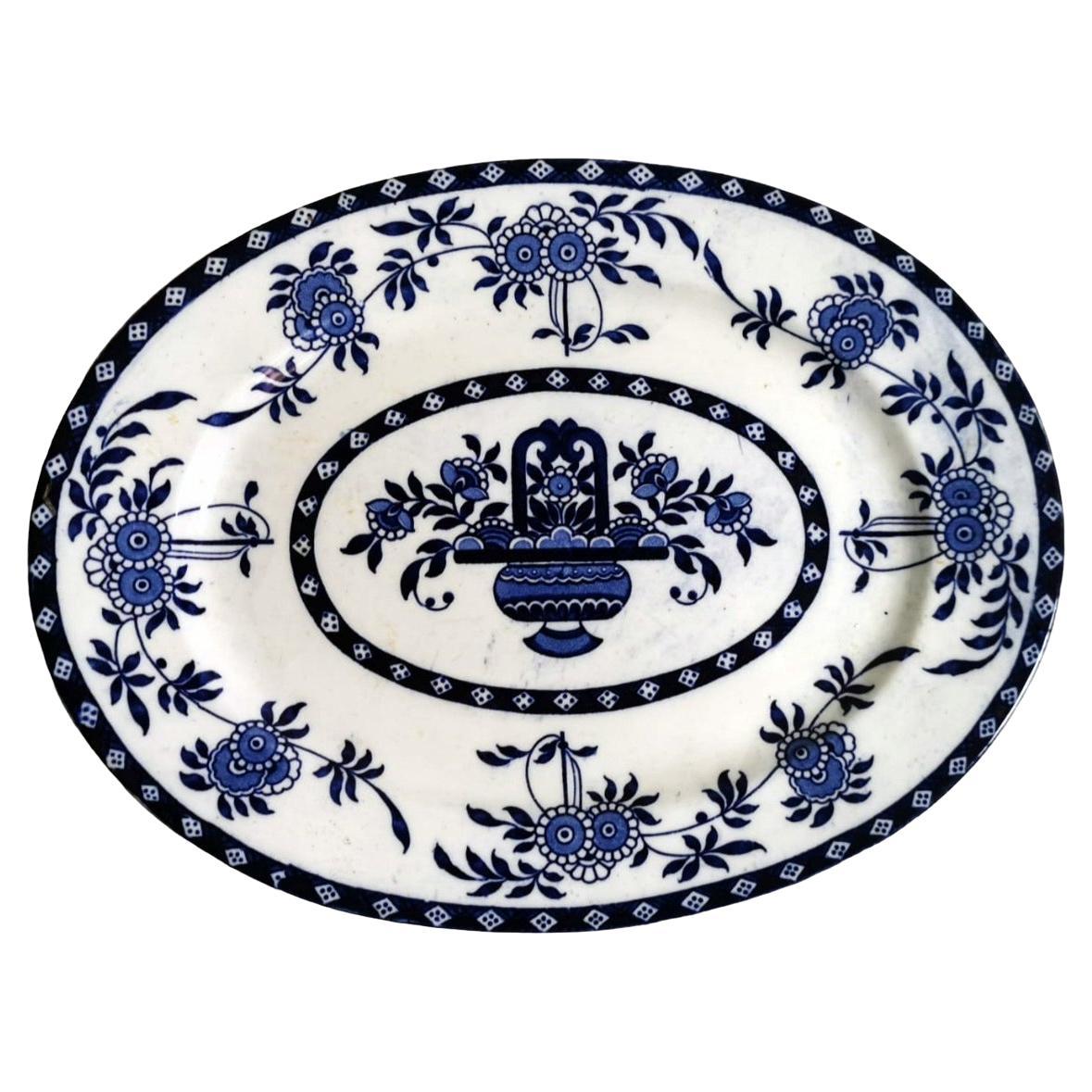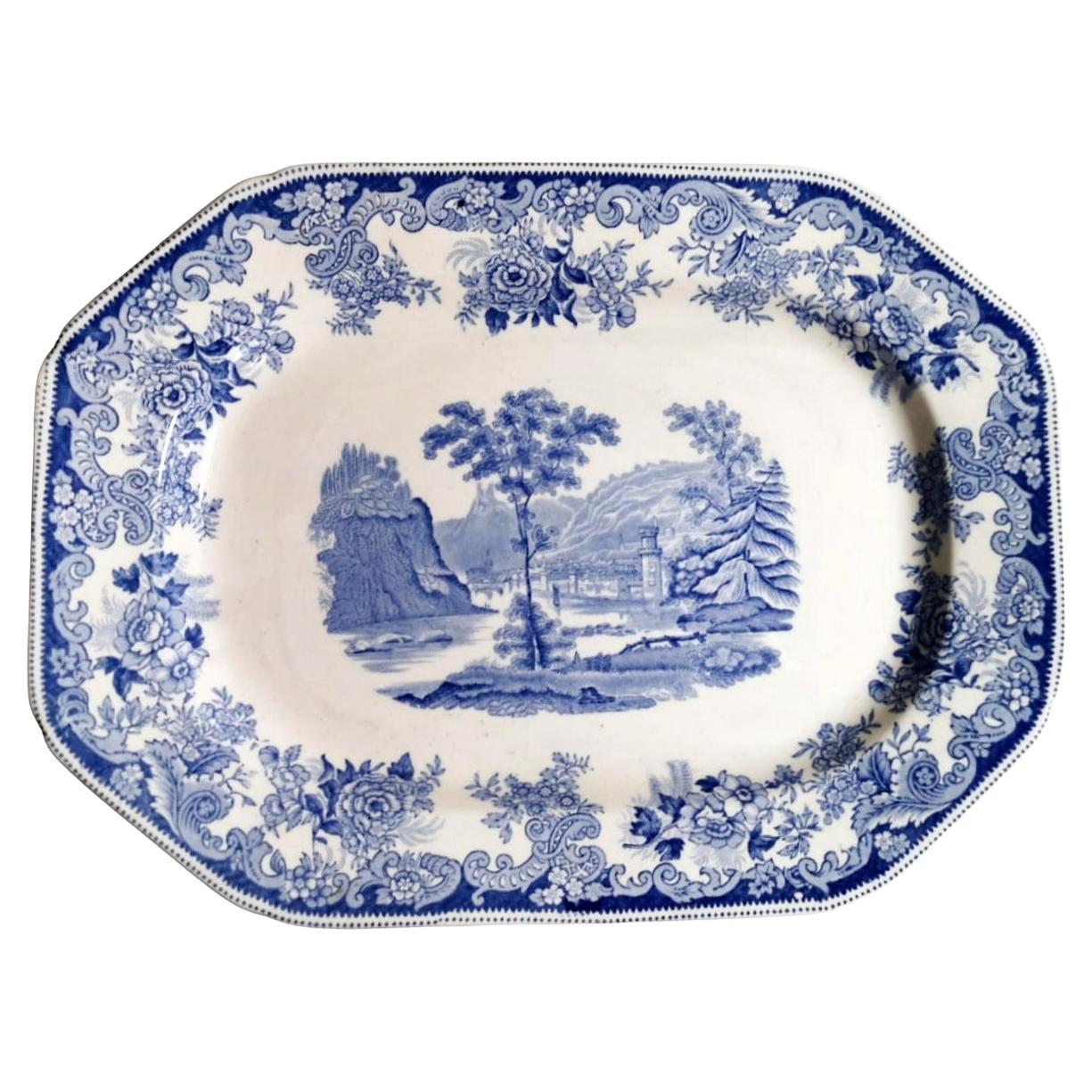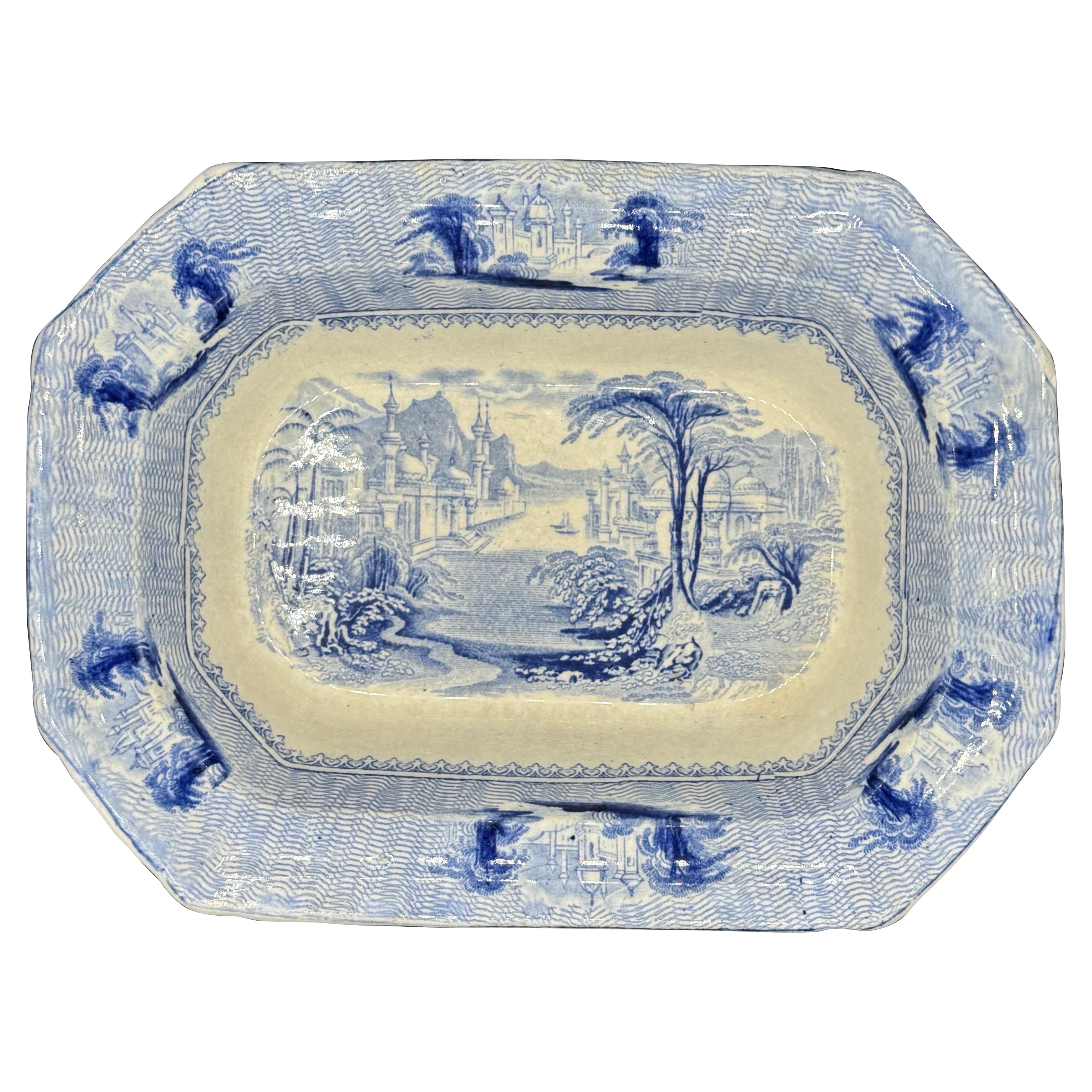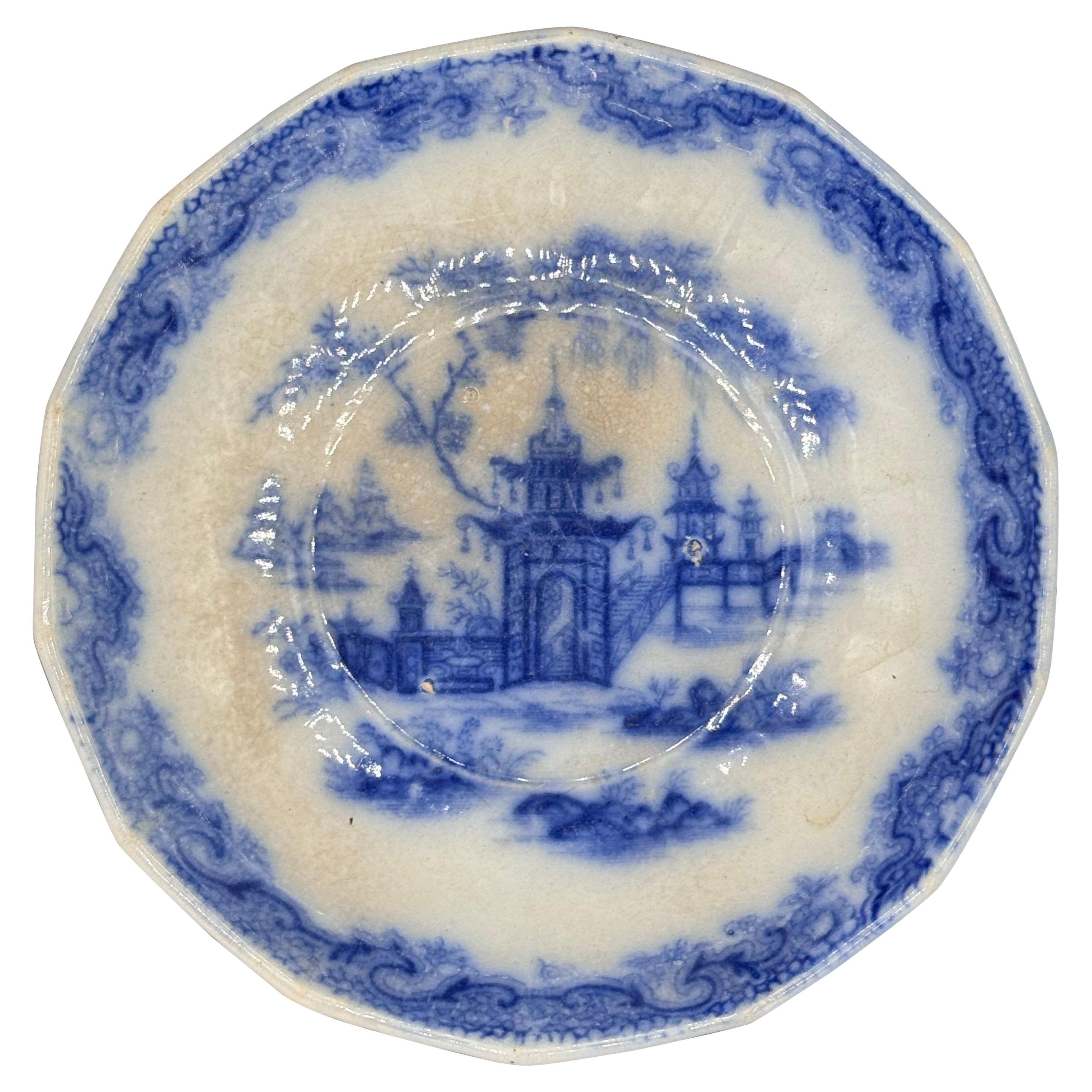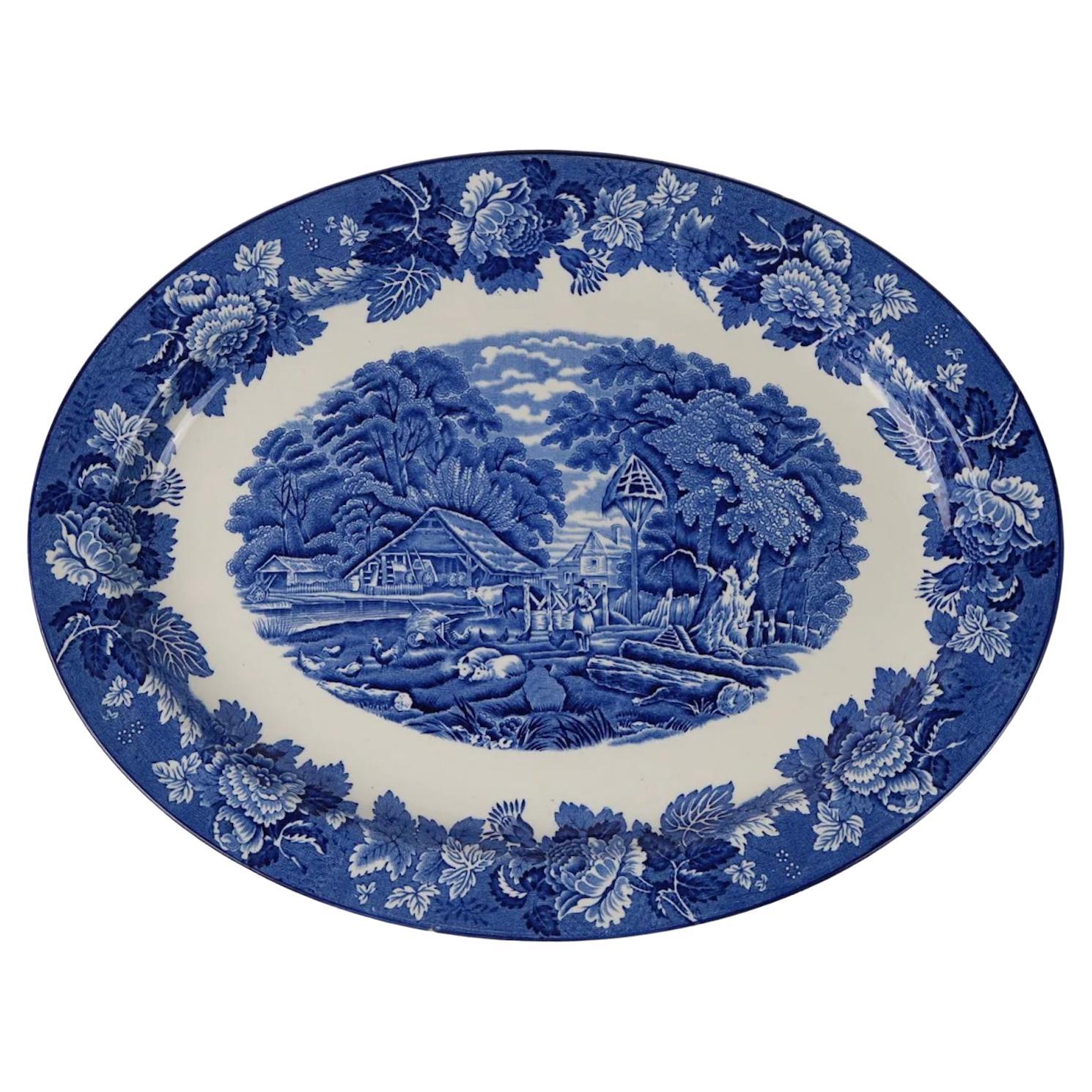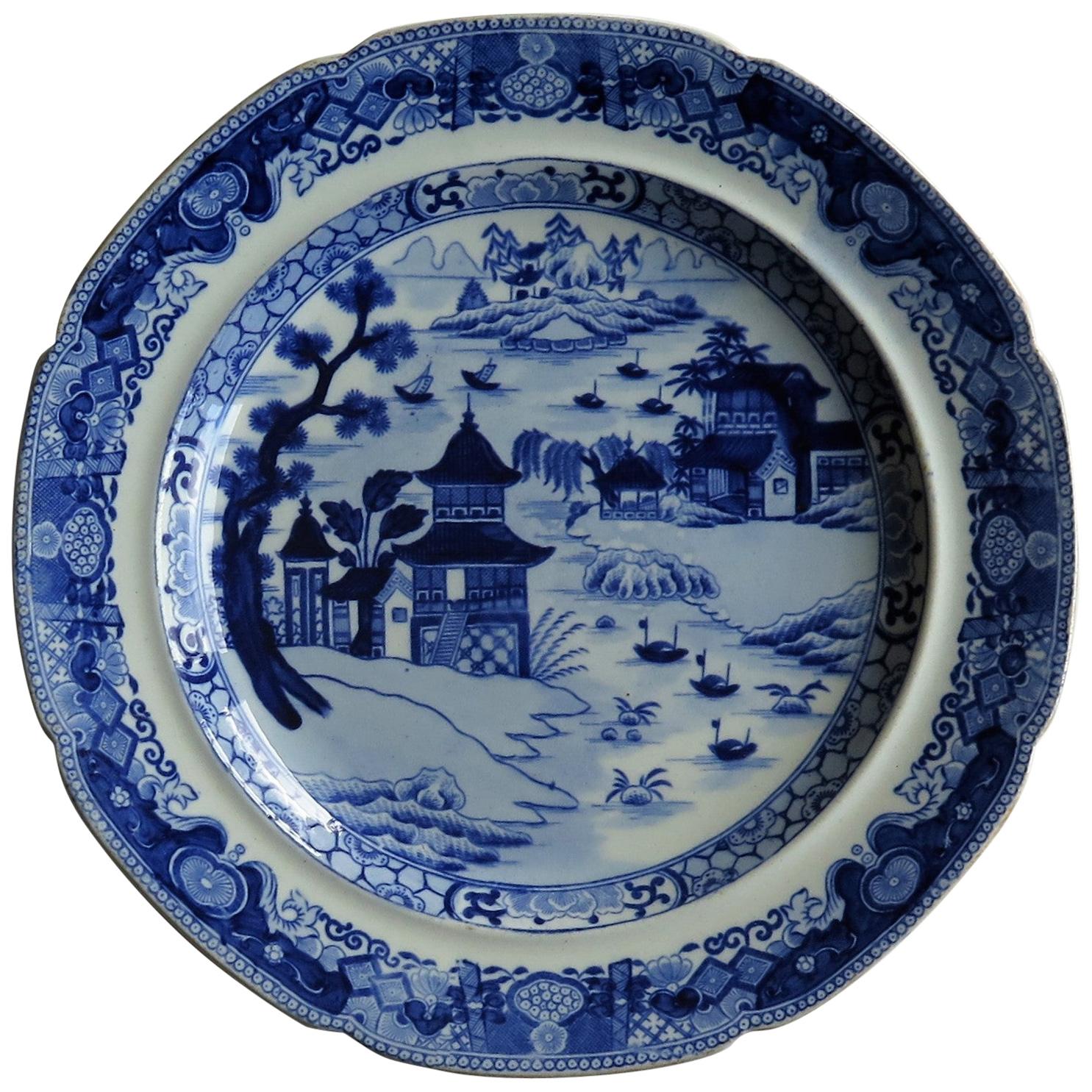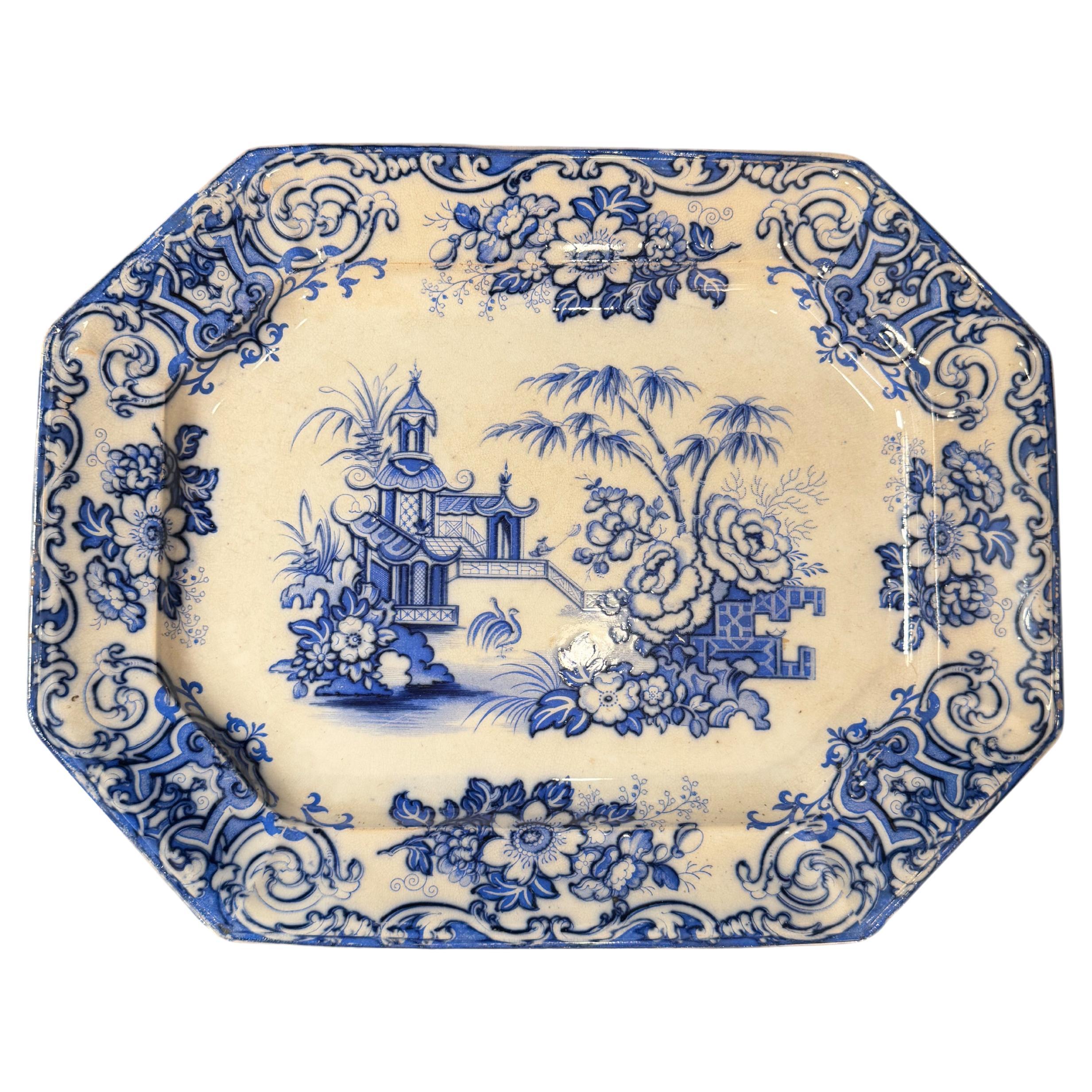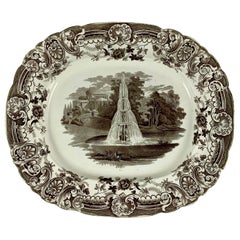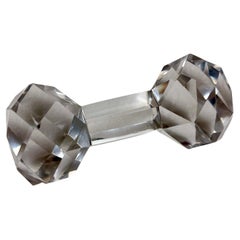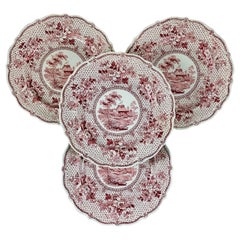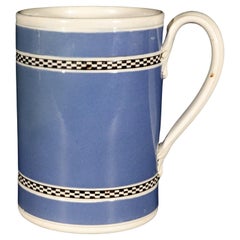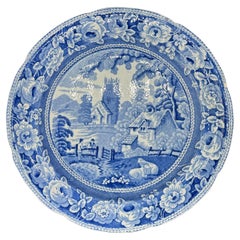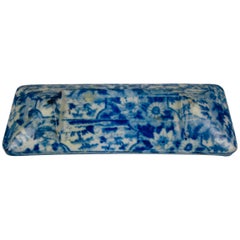
Enoch Wood & Sons English Pearlware Blue and White Transferware Knife Rest
View Similar Items
Want more images or videos?
Request additional images or videos from the seller
1 of 8
Enoch Wood & Sons English Pearlware Blue and White Transferware Knife Rest
$165List Price
About the Item
- Dimensions:Height: 0.75 in (1.91 cm)Width: 1.25 in (3.18 cm)Depth: 4 in (10.16 cm)
- Style:Georgian (Of the Period)
- Materials and Techniques:Earthenware,Glazed
- Place of Origin:
- Period:
- Date of Manufacture:1820
- Condition:Wear consistent with age and use. light surface wear due to age.
- Seller Location:Philadelphia, PA
- Reference Number:1stDibs: LU175826944223
About the Seller
5.0
Platinum Seller
Premium sellers with a 4.7+ rating and 24-hour response times
Established in 1988
1stDibs seller since 2015
616 sales on 1stDibs
Authenticity Guarantee
In the unlikely event there’s an issue with an item’s authenticity, contact us within 1 year for a full refund. DetailsMoney-Back Guarantee
If your item is not as described, is damaged in transit, or does not arrive, contact us within 7 days for a full refund. Details24-Hour Cancellation
You have a 24-hour grace period in which to reconsider your purchase, with no questions asked.Vetted Professional Sellers
Our world-class sellers must adhere to strict standards for service and quality, maintaining the integrity of our listings.Price-Match Guarantee
If you find that a seller listed the same item for a lower price elsewhere, we’ll match it.Trusted Global Delivery
Our best-in-class carrier network provides specialized shipping options worldwide, including custom delivery.More From This Seller
View AllEnoch Wood & Sons English Staffordshire ‘Fountain’ Brown Transferware Platter
By Enoch Wood & Sons
Located in Philadelphia, PA
A Transferware platter in the 'Fountain' pattern – Enoch Wood & Sons. – Burslem, Staffordshire, England, circa 1818-1846.
A dramatic and...
Category
Antique Early 19th Century English Regency Platters and Serveware
Materials
Earthenware
Cut Crystal Dumbbell Carving Knife Rest
Located in Philadelphia, PA
A cut crystal, faceted Dumbbell shaped knife rest, circa early to mid 19th Century.
A large rest, meant to raise the blade of a carving knife from the table, to keep from soiling t...
Category
Antique Early 19th Century American American Classical Crystal Serveware
Materials
Crystal
English Pearlware Franklins Motto Plate, Diligence is the Mother of Good Luck
Located in Philadelphia, PA
An early 19th century Staffordshire transfer printed cup plate with a source print from Benjamin Franklin's "Poor Richard’s Way to Wealth.”
The motto reads, “Diligence is the Mother of Good Luck. Now I have a sheep and a cow everybody bids me a good morrow.”
The scene shows a man with his arm on a cow, conversing with a man on his horse tipping his hat in greeting. Sheep lie in the foreground, a house stands in the distance.
A black transfer printed on a pearlware, earthenware body with a molded rim and a double daisy border.
The pattern is illustrated and discussed in “Gifts for Good Children: the History of Children’s China...
Category
Antique Early 19th Century English Georgian Pottery
Materials
Earthenware, Pearlware
English Ralph Stevenson ‘Windsor Castle’ Red Transferware Dinner Plates, set/4
By Ralph Stevenson
Located in Philadelphia, PA
A set of four British Romantic themed transfer printed dinner plates in the pattern known as ‘Windsor Castle.’ Made by Ralph Stevenson & Son, Cobridge...
Category
Antique Early 19th Century English Georgian Dinner Plates
Materials
Earthenware
William Adams IV & Sons Purple Fountain Scenery Staffordshire Transferware Plate
By William Adams
Located in Philadelphia, PA
A purple transfer printed plate in the Fountain Scenery pattern, William Adams IV & Sons, Stoke-on-Trent, Staffordshire, England, circa 1829-1861.
A scalloped plate, printed in pu...
Category
Antique Early 19th Century English Chinoiserie Dinner Plates
Materials
Earthenware
Wedgwood Brown & Green Tortoiseshell Glazed English Majolica Match Striker
By Wedgwood
Located in Philadelphia, PA
A Wedgwood Majolica earthenware pottery match holder and striker, Staffordshire, England – circa 1869.
For the hearth, kitchen or bedside, the holder is ribbed for lighting strike...
Category
Antique Late 19th Century English Aesthetic Movement Ceramics
Materials
Earthenware
You May Also Like
English Pearlware Pottery Blue and White Jug
Located in Downingtown, PA
The large underglaze blue and white pearlware jug is decorated with flowers on one side and a simple modernistic stylized drape design on the other.
Category
Antique Early 19th Century English Georgian Pitchers
Materials
Pearlware
English Pearlware Blue Slip Pottery Mocha Mug
Located in Downingtown, PA
English Blue Ground Pottery Mocha Mug
Late 18th Century
The blue ground slip tankard with a white handle with leaf terminals has two bands of molded checkerboard black and white ba...
Category
Antique Late 18th Century English Georgian Ceramics
Materials
Ceramic, Pearlware, Pottery
Blue & White plate 8.5” Staffordshire Transferware
Located in Huntington, NY
Blue & White plate 8.5” Staffordshire Transferware
Category
Antique Early 19th Century English George IV Ceramics
Materials
Ceramic
c. 1820-30 Pair of English Pearlware Plates
Located in Chapel Hill, NC
Circa 1820-30 pair of pearlware plates, English. Asiatic "Ceylon Temple" motif blue transferware decoration with fanciful horse, garden houses & multiple figures. Each with a hairlin...
Category
Antique Early 19th Century English Georgian Ceramics
Materials
Pearlware
Staffordshire Potteries English Tray with Blue Transferware Decorations
By Clementson Brothers
Located in Prato, Tuscany
We kindly suggest you read the whole description, because with it we try to give you detailed technical and historical information to guarantee the authenticity of our objects.
Lovely and refined English oval ceramic tray; elegant and rich blue decorations have been executed on the white background using the transferware method; the mark on the back tells us exactly that the object was produced by the Clementson Brothers LTD Company between 1901 and 1913 at the Phoenix factory in Shelton, the company made a wide range of objects with this decoration called "Delf" ( see mark no.909 p.150 of "Encyclopaedia of British Pottery and Porcelain Mark"). Transferware, which was very fashionable in the Victorian period, refers to glazed and decorated pottery with a specific treatment that they produced in Staffordshire, England; they used copper plates on which the design was engraved, the plate was then inked and the design transferred to a special fabric that was later placed on the pottery (plates, trays, tureens, etc.) which was glazed and fired; the first to use this printing process were John Sadler and Guy Green of Liverpool in 1756. If we look at the pottery made by this method we will notice that the designs are not perfect and often the ink is smudged: this is their characteristic. A hand-painted plate service could afford few English families, with this method even middle-class families could have a decorated plate service. The Clementson Firm was founded in 1839 by Joseph Clementson, who retired from the business in 1867, leaving the factory to his four sons and son...
Category
Early 20th Century British Victorian Ceramics
Materials
Ceramic
Copeland-Spode English Tray With Blue Transferware Decorations
By Copeland Spode
Located in Prato, Tuscany
We kindly suggest you read the whole description, because with it we try to give you detailed technical and historical information to guarantee the authenticity of our objects.
Elegant and refined English octagonal ceramic tray; on the white background, soft and rich blue decorations have been executed using the transferware method; in the center we find the poetic and graceful representation of the Severn River and the town of Bridgnorth (the name of this decoration is "Severn"), while the edges of the tray are adorned with sumptuous and spectacular flower and leaf decorations. The Severn River is the longest river in the United Kingdom (350 km), rising in Wales and flowing into the Bristol Channel; Bridgnorth is an ancient Saxon settlement; observing the view of the river and town from his castle at Bridgnorth King Charles I Stuart (1600-1649) said "the most beautiful sight in all my kingdom". On the back of the tray there are 3 imprinted marks including one with final number 14, then we find in the center a blue mark, these indicate to us exactly that the tray was produced in Stoke-on-Trent by the Copeland-Spode company in 1914 (see mark no.1079 p.172 of "Encyclopaedia of British Pottery and Porcelain Mark). The Spode firm was founded in the heart of the Potteries - Stoke-on-Trent by Josiah Spode in 1770. Josiah Spode is most famous for developing the specific design technique that meant underglaze transfers could be printed on earthenware. Later, focusing on porcelain production, Josiah Spode pioneered the development of a new form of porcelain, originally called "Stoke China...
Category
Early 20th Century British Victorian Ceramics
Materials
Ceramic
Recently Viewed
View AllMore Ways To Browse
Antique Glass Knife Rest
Antique Blue And White Transferware
Antique Staffordshire Transferware
Pearlware Blue And White
Enoch And Sons
19th Century Flo Blue
Antique Flo Blue
Antique Royal Cauldon
Antique Wedgwood Biscuit Barrel
Arianna De Luca
Arne Bang Ribbed Bowl
Broseley Porcelain
Chinese Famille Rose Celadon Plate
Chinese Shrimp Dish
Faience Bassano
Faience Cabbage
Funk Pottery
Gatard Denise
